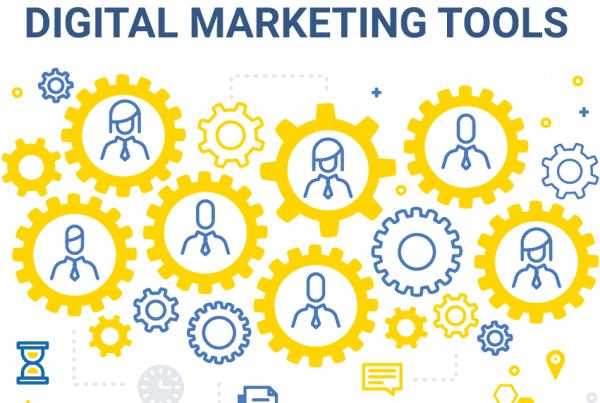Marketing can be quite the battle of budgets, of time, of customer satisfaction, of a/b testing and strategy adjustments. There are many, many moving parts to a marketing campaign that most in your company won’t know or understand. But reporting on these moving parts in a way that others outside the marketing department can understand is vital to your success (and buy-in from the powers that approve your marketing budget).
And when one of these moving parts strikes just right – and you’ve got a win – you need to be able to share and celebrate with your team.
But how you report on marketing, especially a marketing win, can be its own art form. You need to be able to explain to your boss why these metrics matter. So if you are struggling with framing your marketing for your non-marketing minded bosses (and other team members) we’re here to help.
Sharing what happens in the marketing arena largely comes down to proper reporting.
How to Report on Marketing
Focus on Your KPIs
The key to any reporting is to make sure you can tie the metric to the KPI it directly impacts. Don’t cloud your reports with numbers that don’t help tell your story.
Your boss and higher-ups aren’t going to care about metrics that you can’t tie to your overall business goals, so don’t even bother trying to puff up your report with these. Focus on metrics and numbers that impact the bottom line.
If you just landed the biggest sale of the year from your online ad campaign targeted at X buyer persona, report that entire story. From first engagement to last. What actions did this person take? How many online interactions before making contact with your sales rep? How quick were they to close?
Knowing this information will help you put context around all your marketing efforts in this campaign, how they work together, and what you can do to replicate it and get more clients.
The last thing you want is to say you landed the biggest sale of the year from one ad and have your boss think they can cut your budget in other areas and only run ads.
Report Setup & Formatting
How does your boss like to read reports? As a text summary, as a dashboard with top-level numbers, as a report with graphs?
Reports should include any wins and supporting information in a visual way. Unless you know your boss prefers a written brief, using a tool to visualize your data will help you better convey the success of your win.
Tailor Marketing Reports by Audience
Set reports up based on audience type and customize each dashboard to cater to the visual needs of each.
Audience Type 1: C Suite Level
When reporting to your C suite and the business owner, your report needs to be succinct. Configure a reporting dashboard with key metrics that are tied directly to your ROI and KPIs so they can, at a glance, get an understanding of their marketing team’s efforts.
Make sure the reports have enough information to tell the whole story and for your C suite to ask follow-up questions if they want to.
This dashboard should be more than just conversions from an ad campaign. You’ll want to dig deep here and pull out numbers like customer acquisition cost (CAC) and ratio of customer lifetime value to CAC. Not sure how to calculate these?
Check out our post on the top 3 marketing metrics you should be tracking to get your step-by-step guide.
Audience Type 2: Marketing Team
This report should include details about traffic, conversions by channel and campaign, impressions, clicks, keywords, and all the other good stuff you need to make strategic changes to your account.
If you’ve got a large marketing team siloed into PPC, SEO, social, email, etc. you’ll want to include a page of this report that shows full-funnel, cross-functional impact. This means having a part of your report that shows your entire client’s journey, from first contact to last.
Various reporting software tools will report either first or last attribution. Meaning all the credit for the sales goes to the first time they made contact with your content (first attribution) or the very last thing they did before purchasing (last attribution). But as we know, not all the credit should be given to one point of contact.
What are we talking about? An example: Sally’s grass is scorched and she needs to figure out what her options are. She takes to Google and searches phrases like ‘why is my grass dying’ and a blog your wrote on the topic appears in the search results. Sally then realizes she will need professional help. She asks her friends for recommendations and hears about your company. She does a Google search for landscaping companies and clicks on your Google ad. She also heads to social media to see more pictures of your work and read reviews. Then she types in your URL directly and fills out your contact form.
Acquiring Sally as a client took perfect execution from the SEO team, PPC team, and social media team. If you are using first-touch attribution, your SEO team would get the credit for her sale, but as we can see it’s more complicated than that.
Which is why making sure your reporting accurately reflects how many, and which, touchpoints a client had before making a sale is crucial. This will help your marketing team understand how all the efforts must work together, and show which channels you should spend more or less time on. Hence the full-funnel, cross-functional impact.
If you want to get in deep with reporting, you’ll start to track sales and marketing. Sally’s marketing journey ends at the contact form. But her sales journey is just beginning. From her contact form fill, she gets contacted by the salesperson. How many calls before they connect? Do you send her emails about a free consultation? How many days after that form is filled go by before you have payment from her?
Tracking this entire journey and having a close relationship with the sales team is vital for a healthy marketing campaign. Your sales team can provide feedback about the types of questions Sally had that your marketing could address. Your sales team can clue you in on rejections they are getting to fuel inspiration for your next marketing copy. And all this can be done through proper reporting.
Audience Type 3: The Rest of Your Company
Depending on your company size, you might have more groups to report to. Maybe you have a PR team, or regional departments, or a sales team you need to report to.
You’ll want to meet with these departments and find out which KPIs they are responsible for and how your marketing efforts help them achieve those goals. Use those metrics as the basis of your report.
When to Report on Marketing
How often you need to report on marketing will depend on which audiences you are reporting to. Here’s a guideline:
Report marketing to your boss and higher-ups every month.
Report to your marketing department every week.
Report to the rest of your company as you see fit. For us, we are a small crew and we report a few marketing numbers every week at our standing team-wide meeting.
Regardless of how often you report your metrics, if you have a big marketing win report that asap! When a big win comes out of your marketing department, shout it from the rooftops because you’ve earned it.
Don’t let a bad month stop you from reporting.
Reporting can be daunting, especially if you’ve had a rough month. But transparency is key. If you can go into that review meeting owning up to the bad numbers and having a plan to get back on track, your boss will appreciate that over vanity metrics that you can’t explain or tie back to your overall business goals.
Throughout our years of reporting on marketing, we have learned a lot through reporting bad numbers. Maybe even more than we’ve learned reporting on the good numbers. When you have a bad month, you can trace your cause back through your reporting. Which channel wasn’t doing as well this month as last month? Did the sales team close less accounts than they did the prior month? Good reporting will help you answer all these questions and help guide you towards a fix.
Automate Your Marketing Reporting
Using a software like Google Data Studio (check out some of our other favorite digital marketing tools), you can create one marketing report with dashboards for each audience that automatically updates. Using an automated reporting tool not only saves you time, but allows the rest of your team to check in on the progress too.
We went through several iterations of our marketing report before we found a style that worked best for us. We’ve made it into a template that you can download as a starting spot. After you set it up and use it for a few months, make it your own.
Ask your boss, marketing team, and other staff what numbers they’d like to see and how they’d like to see them.
Using automated reporting, especially with a tool like DataStudio, allows you to access a report that updates in real-time. Which means you can give anyone access to this report and they can check to see how your marketing efforts are doing at any time.
The best way to keep your team, your bosses, and the rest of the company bought into what you’re doing is to allow them access to check in whenever they want.
Start the Conversation
Interested in learning more about how our digital marketing and web design services?



